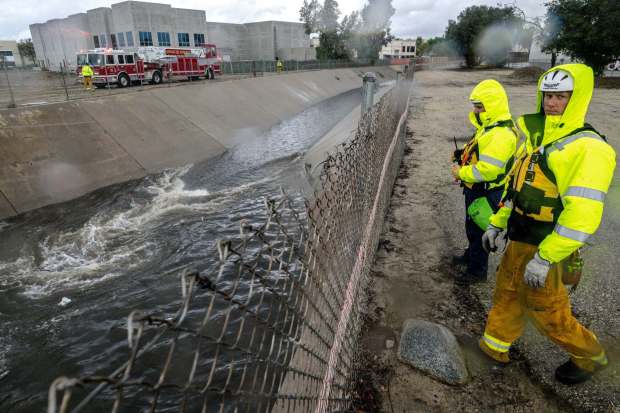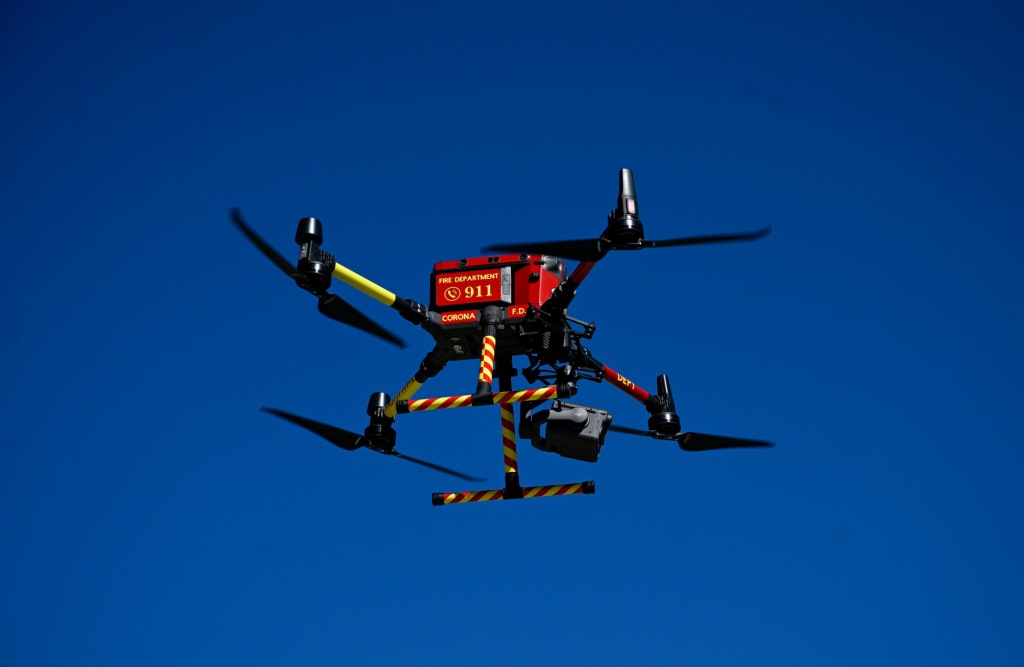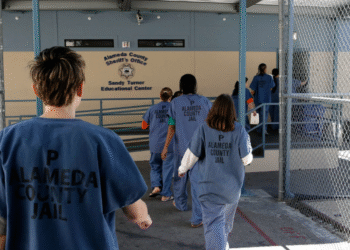On New Year’s Eve, 10 Corona firefighters waded into the Rincon Wash, searching in the dark through thick brush for two homeless people who were trapped by rising stormwater.
Finally, after an hour, the people were located and rescued.
“Every time we put one of our guys in the water, especially swift water, it puts them at risk,” Corona firefighter/paramedic Mike Leckliter said.
But now, with the acquisition of a state-of-the-art drone in late January, the Fire Department can more accurately pinpoint the location of the homeless people inhabiting the city’s rivers and washes to alert them to impending storms and use that information to decrease the time to reach them if they require rescue. The drone can even deliver a life vest.
“It’s going to be a game-changer for us,” Deputy Fire Chief Justin McGough said.
The drone is just one of many ways, high tech, low tech and no tech, that public safety agencies in Southern California warn homeless people to move to higher ground ahead of rising water. The methods often involve person-to-person contact using outreach teams, cell phone alerts and messages broadcast over loudspeakers from police helicopters such as Riverside Police Department’s that flies over encampments in the Santa Ana River ahead of major storms.
The consequences of failing to relocate were spotlighted in November when a surge of water in the Cucamonga Wash in Ontario following a rainstorm swept three homeless people to their deaths. This winter, a seemingly never-ending series of storms has kept water levels — and the danger — high and filled creeks and rivers that can often be dry.

“We’re always looking at ways to prevent a tragedy like that from happening,” said Orange County sheriff’s Sgt. Frank Gonzalez, who is assigned to a team of 12 deputies and a clinician in the department’s behavioral health bureau.
Six deputies are assigned to the Santa Ana River, which in OC stretches from the Riverside County border to…
Read the full article here







